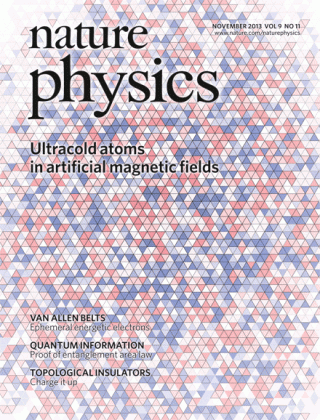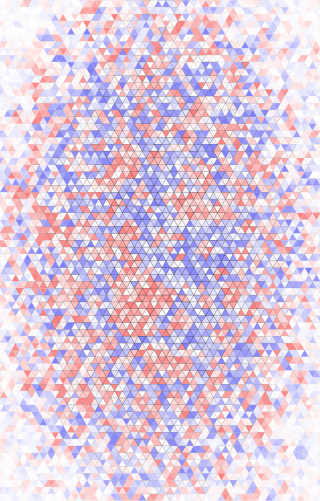 Magnets have fascinated mankind for millenia. A group of CUI researchers and colleagues has just published the results of a study on magnets in the November issue of Nature Physics; an illustration of the magnetic phases from the computer simulation is featured on the cover.
Magnets have fascinated mankind for millenia. A group of CUI researchers and colleagues has just published the results of a study on magnets in the November issue of Nature Physics; an illustration of the magnetic phases from the computer simulation is featured on the cover.
From the Greek philosophers to scientists of the modern era, which saw the rise of quantum mechanics, magnets have been pondered and investigated. Nowadays, they are not only intriguing oddities of nature, but also constitute crucial building blocks of modern technology: Ranging from data storage over medical instrumentation to transportation. And yet, to this day, they continue to puzzle scientists.
A novel approach to understand magnets was taken by a team of scientists led by Prof. Klaus Sengstock and Prof. Ludwig Mathey from the Institute of Laser Physics at Universität Hamburg, with collaborators from Dresden, Innsbruck and Barcelona. In a joint experimental and theoretical effort, quantum matter waves made of Rubidium atoms were controlled in such a way that they mimic magnets. Under these well-defined conditions, these artificially created magnets can be studied with clarity and then give a fresh perspective on long-standing riddles.
Quantum matter waves themselves are an intriguing state of atomic Rubidium clouds, based on a quantum mechanical effect predicted by Einstein and Bose as early as 1924 and observed for the first time in a ground-breaking experiment in 1995, which was later awarded with the Nobel prize. Building on that experiment and developing it further, the team of scientists used infrared laser beams to force the atoms into a motion along triangular pathways, creating quantum matter waves that act as if they were magnets, like the ones you stick on your fridge. Speaking of cold, these atoms are about a trillion times colder than outer space.
“The experimental challenges are extraordinary,” says lead experimental author Julian Struck. “For the atoms to move along the right trajectories, it is absolutely crucial that the laser beams are precisely stabilized. Otherwise, the motion of the atoms would be completely chaotic.”
When a matter wave moves clockwise around a given triangle, as depicted in the illustration, the neighboring triangles are surrounded by counterclockwise motion.

A novel experiment at Universität Hamburg utilizes matter waves to understand magnets. Magnets are built of elementary magnets which can point North (red) and South (blue), as can be seen in this computer simulation.
The resulting orientation at each triangle corresponds to a magnet pointing in North or South direction. These elementary magnets form domains and are in competition with each other, depicted in red and blue.
Lead theoretical author Robert Höppner explains: “We had to use a supercomputing facility such as the one at Juelich for our computer simulations of the experiment. Otherwise the complexity of the problem cannot be tackled. This allowed us to visualize the triangular magnets created by the condensate of atoms, and we learned about the subtle domain structure and how they respond in a magnetic field.”
This research was supported by the Deutsche Forschungsgemeinschaft (GRK1355,SFB925), the Hamburg Center for Ultrafast Imaging (CUI) and the Landesexzellenzinitiative Hamburg (supported by the Joachim Herz Stiftung), ERC AdG QUAGATUA, AAII-Hubbard, Spanish MICINN (FIS2008-00784), Catalunya-Caixa, EU Projects AQUTE and NAMEQUAM, the Spanish foundation Universidad.es, the Austrian Science Fund (SFB F40 FOQUS), the DARPA OLE program and the John von Neumann Institute for Computing (NIC).
CITATION:
J.Struck, M.Weinberg, C.Ölschläger, P.Windpassinger, J.Simonet, K.Sengstock, R.Höppner, P.Hauke, A.Eckardt, M.Lewenstein & L.Mathey, “Engineering Ising-XY spin-models in a triangular lattice using tunable artificial gauge fields.” Nature Physics 9, 738 (2013) DOI: 10.1038/nphys2750

